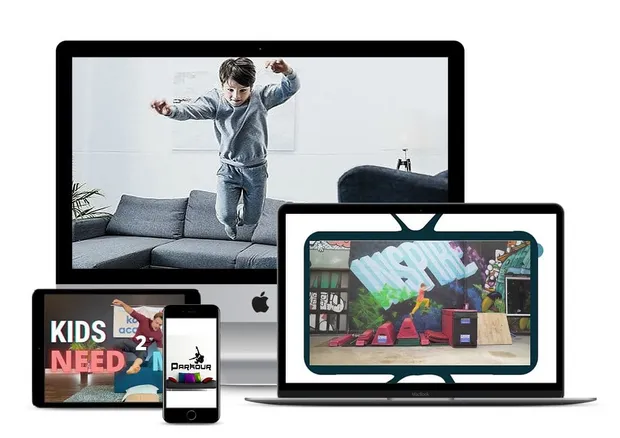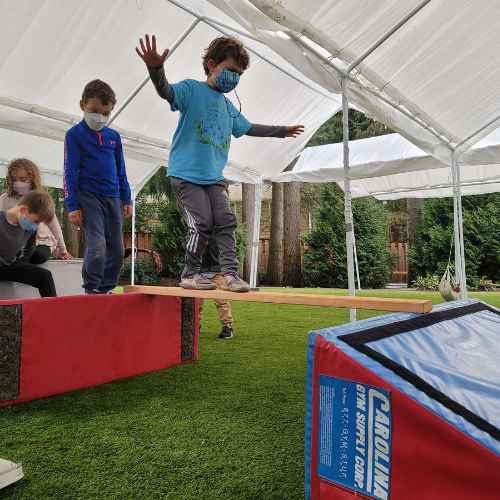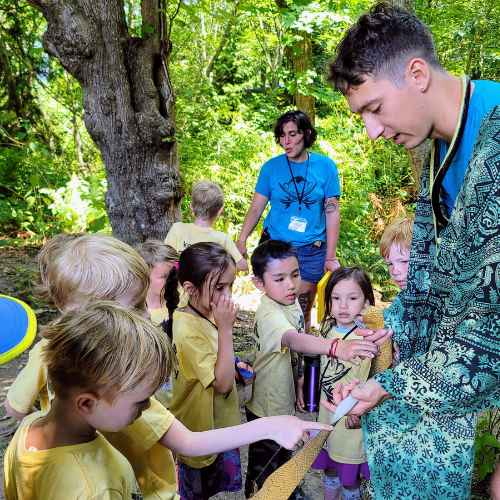
Self-awareness and self-control are two critical life skills that work together to shape a child’s emotional, social, and academic success. These skills empower children to understand their feelings and behavior and manage their reactions effectively. While self-awareness allows children to recognize and label their emotions, self-control enables them to respond to those emotions in constructive ways. Together, these abilities form the building blocks of emotional intelligence, a trait that fosters resilience, empathy, and thoughtful decision-making.
For example, consider a child who gets upset during a game. A self-aware child might notice that their frustration stems from losing, while a child with self-control might resist the impulse to yell or quit and instead focus on learning how to improve. This interplay between recognizing and managing emotions is essential for navigating relationships, handling challenges, setting and achieving goals.
This post delves into what self-awareness and self-control mean, their connection, and strategies to nurture these skills in kids. These insights will help parents, educators, and caregivers guide children toward a more emotionally balanced and fulfilling life.
Understanding How Self-Awareness & Self-Control Are Interlinked
Before we explore the connection between self-awareness and self-control, let’s look at what each of these terms mean.
What Is Self-Awareness?
Self-awareness is the ability to recognize and understand one’s emotions, thoughts, and behaviors. For children, it begins with identifying simple feelings, such as happiness, sadness, anger, or fear, and grows into a deeper understanding of more nuanced emotions like pride, embarrassment, or disappointment.
When children are self-aware, they develop an internal “map” of their emotional landscape. They start to understand why they feel the way they do and how their feelings influence their actions. For example, a child who realizes they feel anxious before speaking in class might recognize that this anxiety stems from a fear of making mistakes. This awareness gives them the power to address their feelings proactively instead of being overwhelmed by them.
Self-awareness also involves understanding personal triggers. For instance, a child might notice they tend to get frustrated when things don’t go as planned, such as when a favorite toy breaks or when they lose a game. Recognizing these triggers allows children to anticipate their reactions and prepare coping strategies.
It also helps children see how their emotions affect others. A child who understands that yelling during playtime upsets their friends is more likely to adjust their behavior. This fosters empathy and strengthens social bonds, which are essential for building meaningful relationships.
What Is Self-Control?
Self-control refers to the ability to manage impulses, regulate emotions, and delay gratification. It helps children navigate situations that require patience, thoughtfulness, or restraint. Unlike suppressing emotions, self-control encourages children to channel their feelings in positive ways.
For example, a child with self-control might feel angry when a sibling takes their toy but chooses to calmly ask for it back rather than snatching it or yelling. Similarly, a child who feels excited during storytime might resist the urge to interrupt the teacher, understanding that waiting their turn shows respect.
Self-control also enables children to stay focused on long-term goals despite short-term distractions. A child working on a school project might resist the temptation to play video games, knowing that completing their work will bring a sense of accomplishment.
Teaching self-control is crucial because it lays the foundation for emotional regulation, academic success, and responsible decision-making. Children who can control their impulses are more likely to handle challenges with resilience and maintain positive relationships with peers and adults.
By understanding what self-awareness and self-control mean, we can better appreciate how they interact and why nurturing them together is key to a child’s development. Now let’s explore how these two skills are interconnected.
The Connection
Self-awareness and self-control are deeply connected. When children develop self-awareness, they gain insight into their emotions, thoughts, and behaviors. This understanding lays the groundwork for self-control, which allows them to regulate their responses to those emotions and make thoughtful choices. These two skills grow in tandem, creating a positive feedback loop that fosters emotional intelligence, resilience, and social harmony.
How Self-Awareness Enhances Self-Control
Self-awareness begins with recognizing what you’re feeling and why. For example, if a child feels frustrated because they’re struggling with a difficult math problem, self-awareness helps them name the emotion (“I’m frustrated”) and pinpoint the cause (“This is hard for me”). Once they’ve identified their feelings, they can move on to self-control—choosing a constructive response instead of reacting impulsively.
Without self-awareness, children are more likely to feel overwhelmed or act out because they don’t understand the root of their emotions. A self-aware child, on the other hand, can pause, reflect, and use strategies like deep breathing or asking for help. This ability to connect emotions with actions makes it easier to manage feelings in a balanced way.
The Role of Self-Control in Building Self-Awareness
While self-awareness supports self-control, the reverse is also true. Practicing self-control helps children become more aware of their emotions and reactions over time. For instance, if a child successfully resists the urge to yell when they’re angry, they might later reflect on what helped them stay calm, such as taking a break or talking to a trusted adult. These moments of self-reflection deepen their understanding of their emotional triggers and coping mechanisms.
This interplay is evident in daily life.
- At school, a child who’s aware of their nervousness before a test might use self-control to prepare more effectively, boosting their confidence.
- At home, a child who understands that their excitement before bedtime makes it hard to fall asleep might practice calming routines to settle down.
- During play, recognizing how their behavior affects others can help them make kinder choices, strengthening friendships.
By nurturing both self-awareness and self-control, children learn to approach challenges with curiosity and resilience. They become better equipped to handle difficult situations and build stronger connections with others.
Emotional Identification
One of the earliest steps in developing self-awareness and self-control is learning to identify emotions. Emotional identification involves recognizing what you’re feeling, naming it, and understanding its cause. For kids, learning how to recognize their feelings is part of maturing and growing up.
Why Emotional Identification Is Important for Kids
Emotions become more complex as children grow, transitioning from simple feelings like happy or sad to more nuanced ones like pride, disappointment, or jealousy. Understanding these emotions helps kids navigate their inner world and express themselves more effectively. Without this foundation, children may struggle to communicate their needs or feel overwhelmed by their feelings.
Recognizing emotions is also vital for self-control. For example, a child who knows they’re feeling angry because they lost a game is better positioned to manage that anger than one who simply lashes out without understanding why. Emotional identification provides the “why” behind feelings, paving the way for thoughtful action.
How to Teach Emotional Identification
Parents and caregivers play a crucial role in helping kids recognize and name their emotions. Here are some effective strategies:
- Use Emotional Flashcards:
Flashcards with faces showing different emotions, such as happy, sad, angry, or scared, are an excellent tool for young children. They can practice identifying the emotions shown on the cards and connect them to their own experiences. - Introduce the Emotion Color Wheel:
An emotion color wheel groups feelings into categories like primary (happy, sad) and secondary (proud, ashamed) emotions. This visual tool helps children see the relationships between different emotions and expands their emotional vocabulary. - Encourage Journaling:
A diary can be a safe space for kids to write or draw about their feelings and what caused them. For instance, they might note that they felt disappointed when they couldn’t go to the park, or proud when they helped a friend. Over time, journaling fosters self-awareness and emotional regulation skills. - Validate All Emotions:
Children need to know that it’s okay to feel all emotions, whether happy, sad, angry, or scared. By normalizing these feelings, you help them understand that emotions are a natural part of life and nothing to be ashamed of.
Emotional identification is a stepping stone to self-awareness and self-control. When children can name their feelings, they’re better equipped to regulate their emotions and make thoughtful decisions.
Emotional Regulation
Emotional regulation is the ability to manage feelings in a way that’s healthy and constructive. This skill is essential for kids to maintain emotional balance, handle challenges, and interact positively with others. Learning emotional regulation helps kids channel their feelings productively instead of being controlled by them.
What Is Emotional Regulation?
Emotional regulation means recognizing your feelings, understanding their impact, and finding ways to respond appropriately. It’s about managing emotions to support well-being. For kids, this might mean calming themselves when they’re upset, cheering themselves up when they’re sad, or staying focused when they’re excited.
Why Is Emotional Regulation Important?
Emotional regulation skills are crucial for navigating social, academic, and personal challenges. A child who can manage their emotions is more likely to:
- Handle Stress: They can stay calm and focused during a test or when facing a disagreement with a friend.
- Build Healthy Relationships: Emotional regulation helps kids respond to others with empathy and patience, strengthening their connections.
- Make Better Decisions: By pausing to reflect, children can choose actions that align with their goals instead of acting impulsively.
Simple Ways to Teach Emotional Regulation
Emotions like anger or fear activate the body’s stress response, making it hard to think clearly. Recognizing these signs can help kids regain control.
- Practice Deep Breathing: Deep breathing exercises can help children calm down during moments of anger, frustration, or fear. Teach them to take slow, deep breaths in through their nose and out through their mouth, counting to three each time.
- Create a Calm-Down Corner: A designated space with comforting items, such as stuffed animals, books, or sensory toys, can give children a safe place to process their emotions.
- Use Positive Self-Talk: Encourage kids to replace negative thoughts with positive ones. For example, instead of thinking, “I can’t do this,” they can say, “I’ll try my best.” This shift in mindset can reduce stress and build resilience.
- Teach Distraction Techniques: Sometimes, redirecting attention can help. Encourage kids to draw, listen to music, or engage in a favorite activity when they feel overwhelmed.
Emotional regulation is a lifelong skill that supports a child’s well-being and success. By guiding kids to manage their emotions effectively, you empower them to face challenges with confidence and poise.
Learning How To Keep Emotions & Reactions Balanced
Keeping emotions and reactions balanced is a key part of self-control. For children, it can be challenging to manage their responses, especially during moments of intense feelings. However, teaching kids to stay calm and make thoughtful choices helps them develop resilience and emotional maturity. This section focuses on helping children maintain emotional balance and approach situations with a positive mindset.
Why Emotional Balance Matters
Children who learn to balance their emotions are better equipped to handle the ups and downs of daily life. Emotional balance helps them navigate conflicts, cope with disappointments, and celebrate successes in a way that’s mindful and grounded. It also enables them to form healthier relationships, as they’re less likely to overreact or withdraw when things don’t go as planned.
For example, a child who feels angry after losing a game might initially want to storm off or blame others. But with practice, they can learn to acknowledge their disappointment, take a deep breath, and congratulate their friend on their win instead. This type of response strengthens friendships and fosters a sense of personal growth.
Strategies for Balancing Emotions and Reactions
Simple strategies, such as those listed below, can help your little ones regulate their emotions better.
Staying Calm to Make Better Choices
Teaching kids to pause before reacting can be transformative. This “pause” gives them time to think about their feelings and choose a response that aligns with their values. A simple method is to count to five or take a few deep breaths before speaking or acting.
For instance, if a sibling takes a toy, instead of shouting, the child can pause and decide whether to calmly ask for it back or seek help from a parent. These small moments of reflection can prevent conflicts and build problem-solving skills.
Using Reappraisal Strategy to Shift Perspective
Reappraisal involves changing the way we think about a situation. This strategy helps kids reframe challenges and view them as opportunities to learn or grow. For example, if a child feels nervous about a class presentation, they can reframe their nerves as excitement to share something they’ve worked hard on.
Reappraisal strategy not only reduces negative emotions but also teaches children to approach difficulties with optimism and confidence.
Reframing Disappointment as a Learning Opportunity
Disappointments are a natural part of life, but they can be valuable learning experiences. Encourage children to reflect on what they can take away from a setback. For example, if they don’t make the soccer team, they might focus on practicing more for next year or exploring other interests.
By reframing situations, kids learn that failure isn’t the end, but a stepping stone toward growth and improvement. This perspective also ties into developing a growth mindset, which emphasizes resilience and perseverance.
Managing Physiological Responses & Unpleasant Emotions
When children experience strong emotions, their bodies often react physically. A racing heart, tense muscles, or even a stomach ache can signal feelings like anger, fear, or frustration. Teaching kids to recognize these physiological responses is an important step toward self-awareness and emotional regulation.
What Happens to the Body During Big Feelings?
Big emotions often trigger a “fight, flight, or freeze” response in the body. For example:
- Anger: Muscles may tense, and breathing might become shallow or rapid.
- Fear: The heart may race, and the stomach might feel uneasy.
- Sadness: Tears may flow, and the body might feel heavy or drained of energy.
These responses are natural, but they can feel overwhelming for children. Helping kids understand what’s happening in their bodies can reduce fear and empower them to take control.
Ways to Calm Physiological Responses
- Deep Breathing Technique: Deep breathing is a simple yet powerful tool for calming the body. Teach children to inhale deeply through their nose, hold the breath for a few seconds, and exhale slowly through their mouth. This technique slows the heart rate and signals the body to relax.
Make it fun by encouraging kids to imagine blowing up a balloon or smelling a flower and then blowing out a candle.
- Exercise and Stretching: Physical activity is an excellent way to release pent-up energy and regulate emotions. Activities like running, jumping, or even stretching can help kids feel more balanced. For younger children, you might try games like jumping jacks or yoga poses like “child’s pose” to release tension.
- Talking About Feelings: Sometimes, just naming an emotion out loud can reduce its intensity. Encourage children to say things like, “I feel angry because…” or “I’m scared that…” Sharing their feelings with a trusted adult or peer helps them process emotions and feel supported.
Tips for Managing Specific Emotions
- Anger: Suggest holding a stress ball, drawing their feelings, or practicing a “safe space” timeout.
- Sadness: Encourage comforting rituals, like cuddling a favorite stuffed animal or listening to soothing music.
- Frustration: Teach kids to break challenges into smaller, manageable steps.
- Fear: Remind them to focus on what they can control and use positive affirmations like, “I am safe, and I can handle this.”
By addressing the physical and emotional aspects of unpleasant emotions, you equip kids with tools to face challenges with confidence and calm.
How A Growth Mindset Helps Kids Not Feel Like They’re Failing
A growth mindset—the belief that abilities can be developed through effort and learning—is a powerful way to help children view challenges as opportunities rather than setbacks. When kids adopt a growth mindset, they become more resilient, curious, and open to new experiences.
What Is a Growth Mindset?
A growth mindset contrasts with a fixed mindset, where children believe their abilities are static (“I’m not good at math” or “I’ll never be able to draw well”). With a growth mindset, children understand that effort and persistence can lead to improvement, whether they’re learning a new skill, overcoming a fear, or solving a tricky problem.
Benefits of a Growth Mindset for Kids
Nurturing a growth mindset can help kids in more than one way.
- Embracing Challenges: A growth mindset helps kids see obstacles as puzzles to solve, not roadblocks to success. This attitude fosters resilience and creative problem-solving.
- Improved Self-Confidence: When kids believe they can grow and improve, they’re more likely to try new things without fear of failure.
- Stronger Emotional Regulation Skills: Kids with a growth mindset are better at managing disappointment because they view setbacks as temporary and surmountable.
Activities for Developing a Growth Mindset
The following activities can help kids nurture a growth mindset:
- Reflect on Discoveries and Challenges: Encourage kids to write or draw about something new they’ve learned, an obstacle they’ve overcome, or a time they faced a challenge. This reflection helps them appreciate their progress and identify areas for growth.
- Create Positive Affirmation Lists: Ask children to come up with positive statements, like “I am capable of learning hard things” or “Every mistake helps me grow.” Reading these affirmations daily reinforces a positive mindset.
- Explore Growth Mindset Stories: Books and videos that showcase characters overcoming difficulties through effort and perseverance can inspire kids to adopt the same attitude.
Teaching kids self-awareness and self-control equips them with skills to navigate life’s challenges with confidence. By fostering emotional identification, regulation, and a growth mindset, you’re helping them build stronger relationships, make thoughtful decisions, and embrace setbacks as opportunities for growth.
Remember, these skills develop over time with practice and support. Encouraging children to manage their emotions constructively and celebrate their progress sets the foundation for lifelong resilience and emotional health.
Ready to help your child master these essential life skills? At Kong Academy, we specialize in programs designed to empower kids with the tools they need to grow emotionally and socially. Visit Kong Academy today and take the first step in building a brighter, emotionally balanced future for your child!
GET Access to the ULTIMATE PLAY DATE PACKAGE (Value: $49) for FREE!


7-Day Crystal Shard Adventure
Unleash your child’s potential with our 7-day crystal shard movement adventure!




